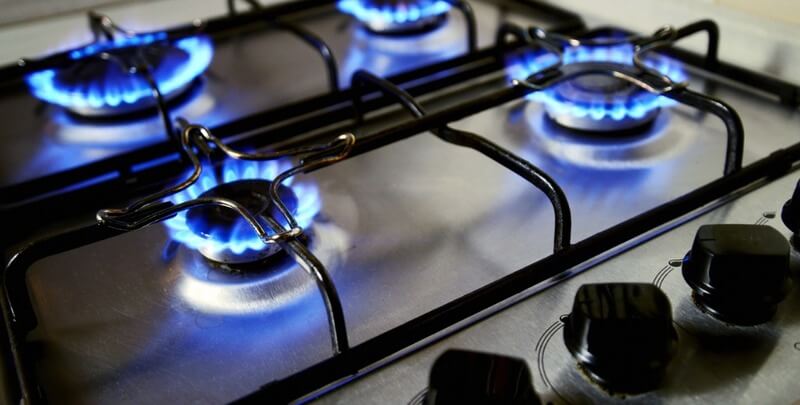Installing a gas cooktop can transform your kitchen into a culinary haven, enhancing both cooking efficiency and aesthetic appeal. Gas cooktops are favoured for their ability to provide immediate heat and precise temperature control, making them a popular choice among home chefs. However, the installation process is not as straightforward as simply connecting the appliance to a gas supply. Various safety regulations and requirements must be adhered to ensure a safe and legal installation. Understanding these requirements is essential to avoid hazards such as gas leaks, fires, or even explosions.
Before embarking on your journey of installing gas cooktop, it’s crucial to familiarise yourself with the necessary clearances, materials, and the importance of hiring a qualified professional. For detailed guidelines on this process, you can refer to this resource. In this blog post, we will cover everything you need to know about gas cooktop installation, from safety measures to professional assistance, helping you make informed decisions for your kitchen upgrade.
Understanding Gas Cooktop Requirements
When it comes to installing a gas cooktop, safety is paramount. To ensure a safe installation, specific clearance measurements must be observed. For instance, there should be a minimum of 600mm clearance from any combustible surface above the cooktop. This is crucial to prevent any fire hazards that could arise from the open flame. Additionally, a horizontal clearance of at least 200mm from combustible materials must be maintained. If these clearances cannot be met, a non-combustible material should be applied up to a height of 150mm along the cooktop’s length. These regulations are designed to protect both the cooktop and the surrounding kitchen environment.
Moreover, it’s essential to maintain a distance of 600mm between the cooktop and the rangehood, as well as 750mm from the exhaust fan. These distances help ensure proper ventilation and reduce the risk of fire. Adhering to these guidelines not only complies with legal standards but also promotes safe cooking practices in your home.
The Importance of Professional Installation
While some homeowners may consider a DIY approach to installing their gas cooktop, this can be extremely risky. Gas installations require specialized knowledge to ensure compliance with Australian standards and safety regulations. Incorrect installation can lead to dangerous situations, including gas leaks, fires, or explosions. Therefore, hiring a qualified gas fitter is highly recommended. A certified professional will not only ensure that your cooktop is installed correctly but will also provide you with a compliance certificate. This certificate confirms that the installation meets all relevant regulations and has been tested for safety.
In addition to safety, professionals bring expertise that can save you time and potential headaches. They are familiar with local regulations and can navigate any challenges that arise during the installation process. This peace of mind is invaluable, especially when dealing with gas appliances.
Compliance and Certificates
In Australia, all gas installations must comply with specific regulations, which can vary by state. This means that when you have your gas cooktop installed, it’s essential to obtain a compliance certificate from your gas fitter. This document serves as proof that the installation meets the necessary safety standards and has been tested for functionality.
A compliance certificate is not just a formality; it’s a safeguard for you and your family. It ensures that your cooking appliance is safe to use and reduces the risk of potential hazards. If you ever need to sell your home, having documented proof of proper installation can also be a significant advantage. Therefore, always insist on receiving this compliance certificate after the installation of your gas cooktop.
Clearance Measurements and Materials
Safety clearance is a critical aspect of gas cooktop installation. The recommended vertical clearance is at least 600mm from any combustible material above the cooktop. This includes cabinets or shelves, which could pose a fire risk if they are too close to the flame. Additionally, it is essential to maintain a horizontal clearance of 200mm from combustible surfaces on either side of the cooktop.
If meeting these clearance requirements is challenging due to your kitchen layout, using non-combustible materials can help. Installing a non-combustible surface up to a height of 150mm along the cooktop can mitigate fire risks effectively. These materials can include stainless steel or tiles, providing both safety and an appealing aesthetic.
Ventilation Needs
Proper ventilation is another critical factor to consider when installing a gas cooktop. Adequate ventilation helps to disperse cooking fumes and gases, ensuring a healthier kitchen environment. The Australian standards require a distance of at least 600mm between the cooktop and the rangehood. This distance helps to ensure that the rangehood can effectively extract smoke and fumes generated during cooking.
In addition to rangehoods, consider installing an exhaust fan if your kitchen lacks sufficient ventilation. The recommended distance from the cooktop to the exhaust fan is 750mm. Proper ventilation not only enhances safety but also improves the overall cooking experience by keeping your kitchen comfortable and smoke-free.
FAQs About Gas Cooktop Installation
1. What are the main safety concerns when installing a gas cooktop?
Safety concerns include ensuring proper clearance from combustible materials, adequate ventilation, and hiring a certified professional to avoid gas leaks and other hazards.
2. Can I install a gas cooktop myself?
While DIY installation may seem tempting, it is risky and not recommended. It’s best to hire a qualified gas fitter to ensure safety and compliance with regulations.
3. What is a compliance certificate?
A compliance certificate is a document issued by a licensed gas fitter confirming that the gas cooktop installation meets all relevant safety regulations and has been tested for functionality.
4. How do I maintain my gas cooktop?
Regular cleaning, checking for gas leaks, and ensuring that burners are functioning correctly are essential for maintaining your gas cooktop.
5. What materials are safe to use around a gas cooktop?
Non-combustible materials like stainless steel, tiles, and stone are safe for use around gas cooktops to prevent fire hazards.
Conclusion
Installing a gas cooktop can significantly enhance your cooking experience, but it is crucial to approach the process with caution and knowledge. Understanding the safety requirements, the importance of professional installation, and the need for compliance certificates can help you navigate this task successfully. Always prioritize safety by adhering to clearance guidelines and ensuring proper ventilation to create a secure cooking environment. By taking these steps, you can enjoy the benefits of a gas cooktop while keeping your home safe. Remember, when in doubt, consult with a qualified professional to ensure everything is installed correctly and safely






